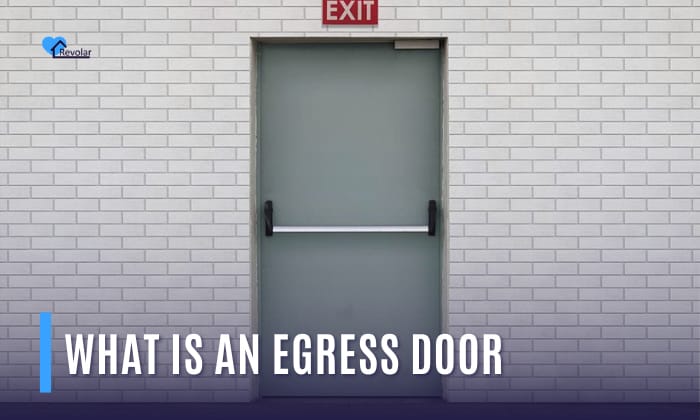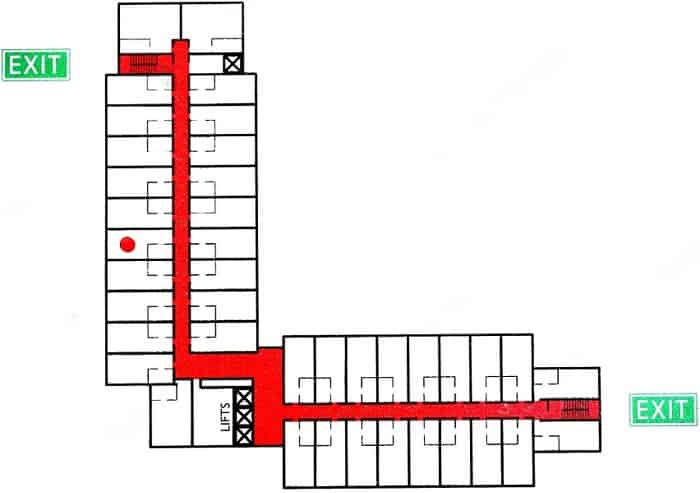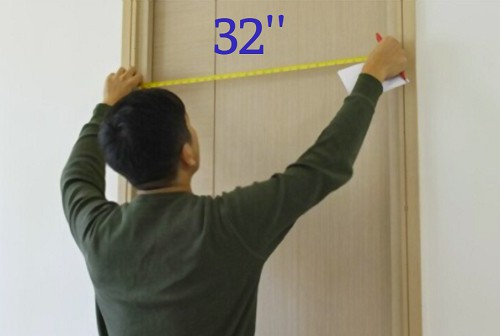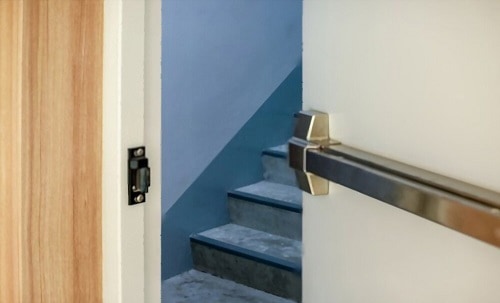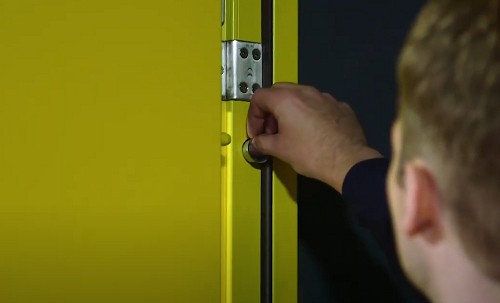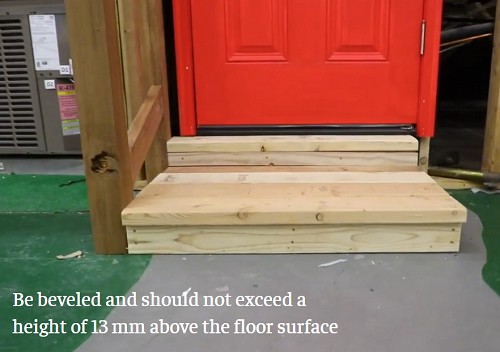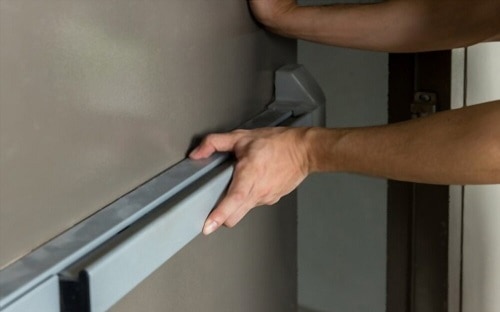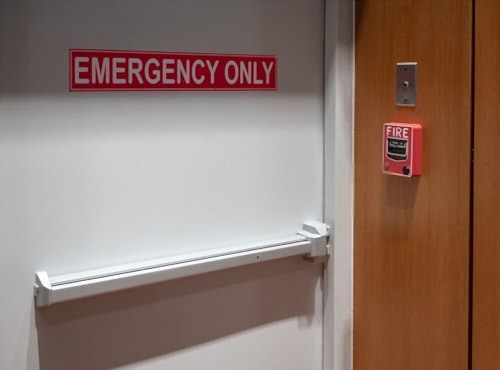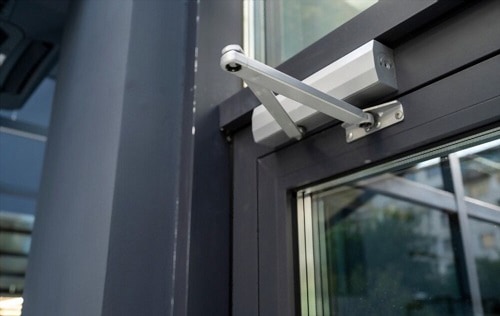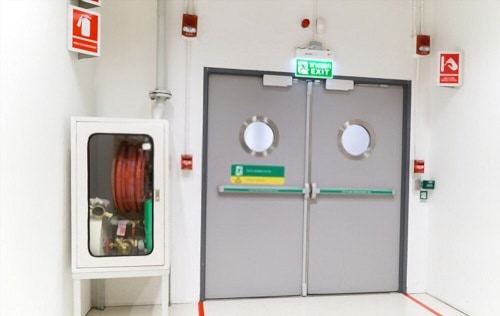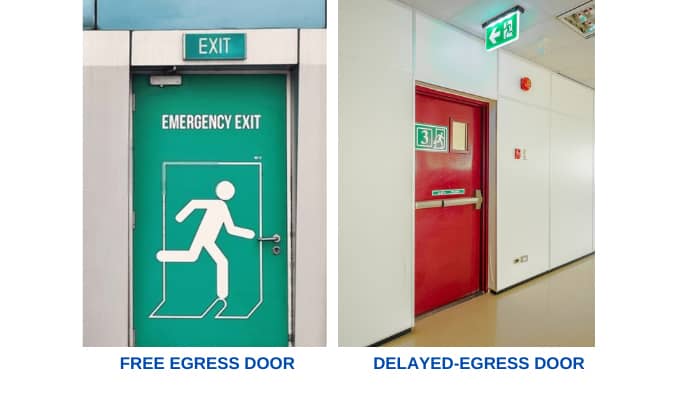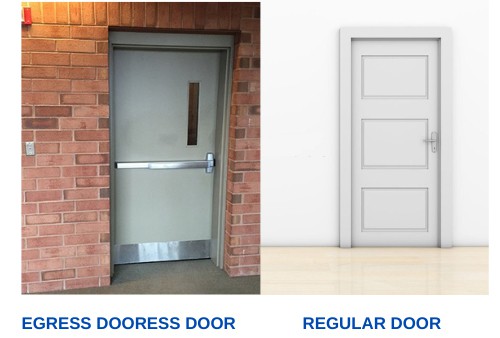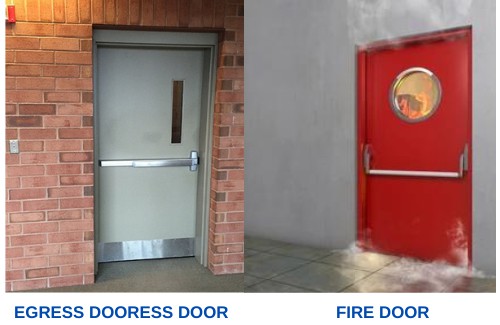An Egress door is an emergency exit door that allows people to evacuate a building quickly and safely when life is at stake. This door must meet specific requirements set by building codes to ensure it can be opened easily, even without a key or special knowledge.
Emergency egress doors are a vital component of building safety systems. Hence, being aware of the requirements, and regulation surrounding it, its proper installation, and its unique features may save you when caught up with the situation.
Continue to know more about what an egress door is, and its guidelines.
Table of Contents
Components of an Egress Door
The Egress door is only a part of the overall means of egress contained in Chapter 10 of both the International Building Code and International Fire Code and National Fire Protection Association 101 – Life Safety Code.
What is an egress, and why was it used in building codes?
Egress definition is the action of leaving a place. Hence, “means of egress” describes the continuous path leading to the outside of a building.
Means of egress is the totality of 3 distinct components of an unobstructed path provided to leave a building in an emergency. Beginning from the inside is the exit access, the exit, and the exit discharge.
- Exit access comprises the escape routes on the inner side of the building going to an exit.
- Exits are portions of the egress system separated from the exit access, which leads to an exterior route. This may be a door egress, horizontal exit, or stairway.
- Meanwhile, exit discharge is the path you walk past the building structure. Its width and height measure about 10 feet or bigger.
Egress Door Requirements and Regulations
Since egress door serves as the door for safe evacuations of lives, its materials are made and installed following requirements and regulations required by various accredited organizations.
Here are the commercial egress door requirements that work together to provide reliable operation during emergencies.
1. Door Size
Egress door has some standards to uphold. First, It must have some breathing room with a width of at least 32 inches when measured from the door’s face to the frame’s stop, while open at a perfect 90-degree angle.
Also, egress door height must not have less than 78 inches opening from the threshold top to the stop bottom.
2. Lock
Since the priority of an egress door is to provide a way out, locks, latches, and fancy fasteners accessories need to be user-friendly to avoid people being locked out. It must allow the door to be opened on the egress side of a door even without key or special knowledge.
3. Swing
Egress door requires a door with pivot or hinges, and it must be installed in a way it swings outward towards the direction of travel when there are 50 or more individuals. This set up allows smooth and efficient exits.
4. Threshold
The egress door thresholds should be beveled and should not exceed a height of 13 mm above the floor surface. These requirements ensure that it minimizes potential hazards and provides accessible pathways for everyone, including individuals with disabilities or limited mobility.
5. Force
To let egress doors be accessible even for weak people, they must be able to open with less amount of force. The force required shouldn’t exceed 67 Newton (15 pounds) to release the latch and 133N or 30 lbs to set the door in motion.
6. Panic Hardware
Egress door panic hardware must:
- Have a push-pad or crossbar that spans at least half the door width to ensure it can be seen easily during high-stress situations.
- Installed no lower than 34 inches from the finished floor for accessibility purposes.
- Open with a reasonable amount of force in the direction of egress so that it can be opened by anyone with different strength abilities.
7. Door Closer
When a door closer is installed on the egress door, ensuring it closes gradually within a leisurely three seconds.
8. Power-operated Door
Power outages mostly occur during emergencies. In most cases, a standby power source is installed, especially for commercial buildings, hospitals, and schools to power up the security features installed and life-saving devices.
In the case of a power-operated egress door previously known as an electromagnetically locked egress door, it must have an integrated feature that must be opened and closed manually to keep the exit routes accessible all the time even without power back-up.
Applications of Egress Door
Aside from commercial buildings, egress doors are mandatorily installed in hospitals, schools, and residential buildings. The number of egress doors installed depends on the number of occupants, building size, and how many stories it has.
On the other hand, When talking about how many egress doors are required in a home, it gives a little bit of difference in setup. Every family unit requires one egress door. So, when a house has two or three units, each unit must have a separate egress door.
Types of Egress Doors
There are two types of egress doors. It is either a free egress or delayed egress door.
1. Free Egress Door
Free egress refers to the ability to exit an egress door immediately and effortlessly with a single action, like turning a lever or pushing a panic bar. That said, it may not be appropriate in places with potential hazards as well as places that demand tight security.
2. Delayed-Egress Door
Delayed-egress door involves delayed opening tactics before one can pass through it. When this type of door is installed, it must be:
- clearly labeled with signage indicating the delay (15 to 30 seconds)
- linked to the building’s fire alarm system to override the time delay when the alarm is activated.
Delayed egress is often used to thwart theft or unauthorized access. However, this may also give a shortened time for escape when an emergency occurs.
Egress Door Installation
1. Selecting the Right Egress Door
When it comes to choosing the right egress door for your home, the following should be taken into consideration:
- type of door suitable for your needs
- limitations of available space
- appropriate door materials
- incorporated security features
- energy efficiency it offers
- design that complements your home’s aesthetics
- overall installation cost
- compliance with the relevant local building codes
2. Installation Process
- The installation process for the egress door should adhere to the requirements stated in the local regulations and other standardized codes and follow the installation instructions from the manufacturer.
- One of the most difficult to install is an egress door basement as it needs cutting through walls. This project needs calculations to fit all the door accessories and heavy-duty equipment. Hence, it is recommended to hire professionals.
- Also, when installing a delayed egress door, it must be connected to the fire alarm system of the building. This setup automatically overrides the delayed feature of the egress door when the fire alarm is activated.
- And remember to add the signage stating the programmed delays.
3. Maintenance and Inspections
To have a properly functioning egress door, it must be maintained and inspected on a quarterly basis according to Essential Safety Measures(ESM). However, the NFPA101 requires an annual inspection to verify the egress door hardware, test their functional abilities, and ensure that all the visual signages are present.
In the event, a malfunction is discovered, or wear and tear affects the proper functioning of the egress, the door must be repaired or better replaced without delay.
Compared With Other Doors
1. Egress door vs. Regular door
The Egress door has unique features that make it different from a regular door.
- It strictly adheres to standardized regulations by following specific criteria to ensure quick and safe escape both for abled persons and handicapped. Also, penalties are given to home and building owners for non-compliance of such.
- In contrast, regular doors offer flexibility in shape and size. Still, they don’t have specific requirements for operation or handicap access unless they lead to public areas subject to (Americans with Disability Act) ADA regulations.
Compared to a regular door generally used for regular rooms, the egress door cost is a bit more expensive due to its materials and security features.
2. Egress Door vs Fire Door
- An egress door provides a safe exit during emergencies. Its main goal is to facilitate quick and orderly evacuation.
Egress doors have specific requirements for easy access and often include panic hardware for quick unlocking. They focus on safe evacuation rather than fire containment.
Some egress doors can be more sophisticated. It can have the requirements of a fire-rated door at the same time, the capability of a safe exit.
- Meanwhile, a fire door is designed to contain fire and smoke, protecting occupants and property. Its purpose is to limit the spread of flames, allowing safe evacuation and giving firefighters time to control the fire. It complies with fire safety codes.
Frequently Asked Questions
Is an egress door required in my home?
Yes, at least one egress door is required in homes. However, two egress doors installed on the opposite sides of the house provide an alternate route in case the other way is blocked or consumed by fire.
Can I install an egress door myself or should I hire a professional?
Although it is feasible to personally install an egress door, it is typically advisable to let the professional carry out the installations as they are equipped with proficient knowledge to accurately and effectively install egress doors that comply with requirements and regulations.
Also, when dealing with egress doors that need cutting through walls, professionals have heavy equipment available to help in the process.
How often should I inspect and maintain my egress door?
According to the Life Safety Code of NFPA 101, Egress doors should be inspected and tested annually to ensure they’re properly operating. Written inspection, repair, and maintenance done to the doors within 3 years must be kept for future reference.
Conclusion
The very purpose of egress doors is to provide clear, safe, and accessible routes for individuals during an emergency.
In addition to meeting egress door code requirements and regulations, property owners should prioritize regular maintenance and inspections to ensure that egress doors remain in good working condition.
Furthermore, knowing what an egress door is and its location surely saves you from a life-threatening situation that people, fire, or earthquake may cause.

I am the last member to join Revolar and might be just the luckiest to work with dedicated people like Teddy and John. Our team has established a process where my only job is writing the best content to deliver incredible ideas and guides.


